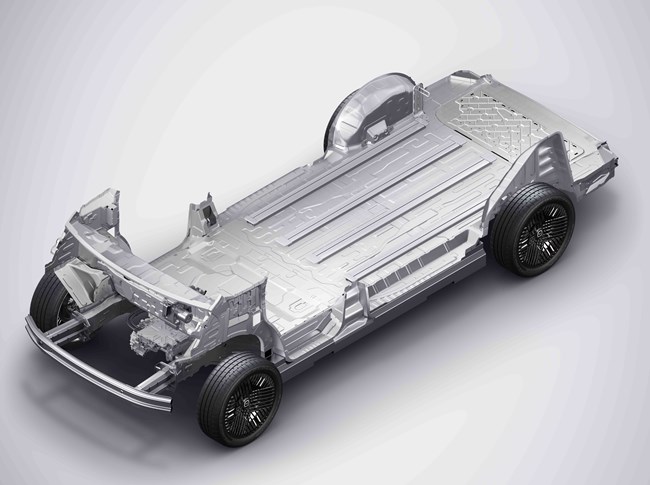- Orders open for Ineos Grenadier Commercial
- Toyota Hilux range gains new rally-inspired GR Sport II variant
- Remarketing: Pick of the bunch
- GA Commercial acquires first vans through Vanaways
- 'Luxury' tax on expensive pick-up trucks suggested
- ADVERTISEMENT FEATURE: Essential advice to avoid the van fleet ICE-berg
- ETRUX launches new Ford E-Transit Trizone
- Renault gives UK debut to Master E-Tech at CV Show
- Isuzu D-Max long-term test – Latest Report
- Isuzu D-Max V-Cross Steel Edition revealed
New electric vans part of LEVC's future
Date: Friday, May 5, 2023 | Author: Sean Keywood

New electric vans are set to be part of an expanded vehicle range from LEVC.
The brand is best known as the maker of the TX London taxi, but also produces the closely-related VN5 van based on the same range-extender electrified platform.
LEVC has revealed a new platform which it says will underpin a new range of EVs, to include both passenger-carrying and commercial vehicles.
The new Space Oriented Architecture (SOA) platform has been co-developed with LEVC’s parent company Geely Holding Group, also owner of brands such as Volvo, Polestar, and Lotus.
The new platform will be compatible with 73kWh, 102kWh, and 120kWh battery options, with the latter allowing a range of up to 359 miles on the WLTP cycle, and ultra-fast charging capability allowing around 124 miles of range to be added in ten minutes. Front-wheel drive, rear-wheel drive, and all-wheel drive layouts will all be possible.
SOA has been designed, with a centrally-located battery, to have a fully flat floor, which LEVC says allows space for passengers or cargo to be maximised. In addition, the rear suspension has been designed to allow extra carrying capacity underneath the main luggage area, behind the rear axle. Low step-in heights are also claimed to aid access.
Vehicle lengths of between 4,860mm and 5,995mm will be possible, with wheelbases of between 3,000mm and 3,800mm.
SOA also incorporates LEVC’s new L-OS digital architecture, which it says will support up to Level 4 autonomous capability, which is expected to arrive after 2025 depending on local market regulations.
LEVC is tight-lipped about specific model plans with the new platform, but says it will allow it to target new market sectors, being suitable for “premium and multi-purpose passenger cars” as well as commercial vehicles. It has suggested target markets will include sharing, leisure, business, utility, and delivery.
Speaking at the launch of the new platform, at LEVC’s factory near Coventry, managing director Chris Allen said: “It’s a pretty big ambition to be showing this span that takes us from passenger luxury consumer vehicles to utility and delivery vehicles.
“We’re covering a big space there in a single platform. But that’s what this platform is and why it’s so exciting because it’s giving us flexibility to say we’re not just constrained with one area, one segment.
“We have a complete, flat-floor, modifiable environment that we can adapt and that satisfies the BEV market.”
The VN5 and TX are set to continue alongside the new SOA-based models, and could themselves become fully electric at a later date.
When asked by What Van? about the VN5’s future, Allen said: “The VN5 offers its own unique capabilities – space oriented, [with a] 5.5m3 loading space, and giving you a much higher premium feature set.
“For last mile delivery, first mile delivery, there’s still uncertainty with outright [EV] infrastructure to deliver that.
“Moving it to BEV, and how we do that, there’s a lot of commonality with the TX. It’s just finding the right product, and the right size, because [SOA] scales to a much larger size than the VN5 does.”
View The WhatVan Digital Edition


